Cariri: A privileged tourist destination
1. Natural beauties of the Araripe Plateau
The Cariri region of Ceará is characterised by its strategic location, bordering three states: Piauí, Pernambuco and Paraíba.
Located in the south of the state, the Chapada do Araripe is an ecological reserve that contains natural springs, caves and paleontological sites, making it one of the five most important chapadas in Brazil.
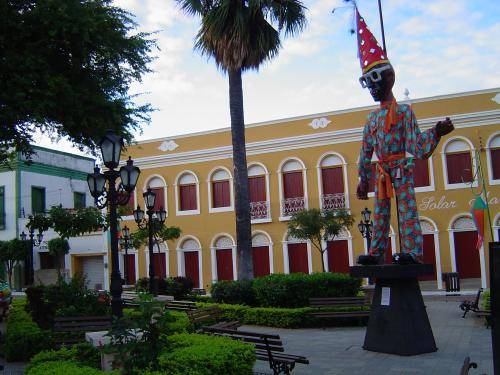
2. A Centre for Ecological and Cultural Tourism
In addition to its natural beauty, Cariri Cearense is a centre for ecological and cultural tourism.
The region has an authentic cultural climate, surrounded by breathtaking landscapes, religiosity and faith in Padre Cícero, and a wealth of museums, mythological and palaeontological sites, social projects, cuisine and handicrafts.
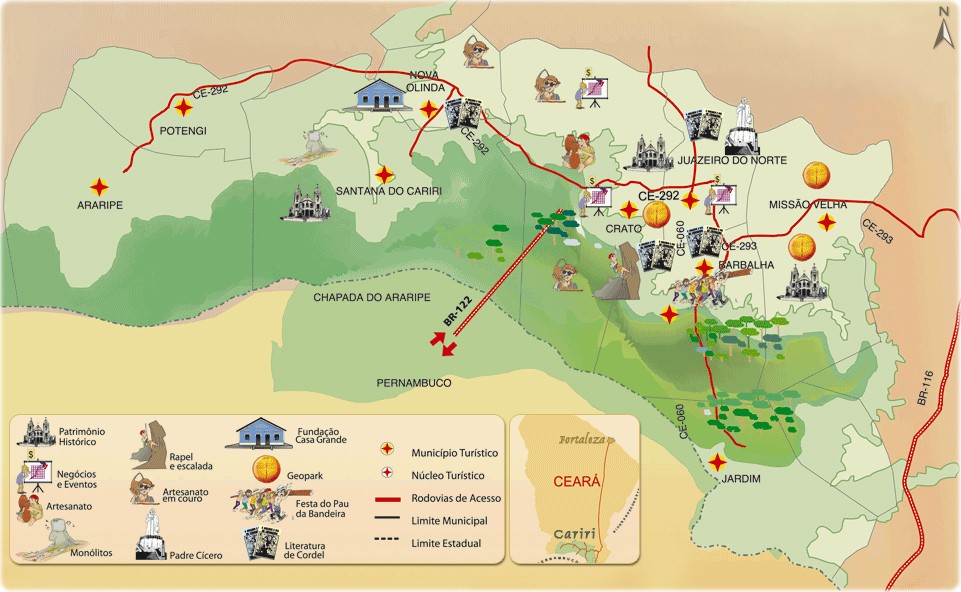
The Araripe Plateau is one of the five main plateaus of Brazil.
What to do in Cariri?


Barbalha no Ceará00:58

Crato no Ceará00:59

Juazeiro do Norte no Ceará00:59

Geopark Araripe no Ceará00:59

Museu de Paleontologia de Santana do Cariri02:53

Floresta Nacional do Araripe00:58
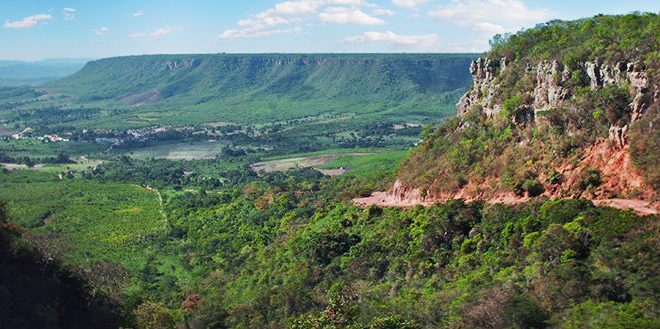
Chapada do Araripe Patrimônio da Humanidade02:05
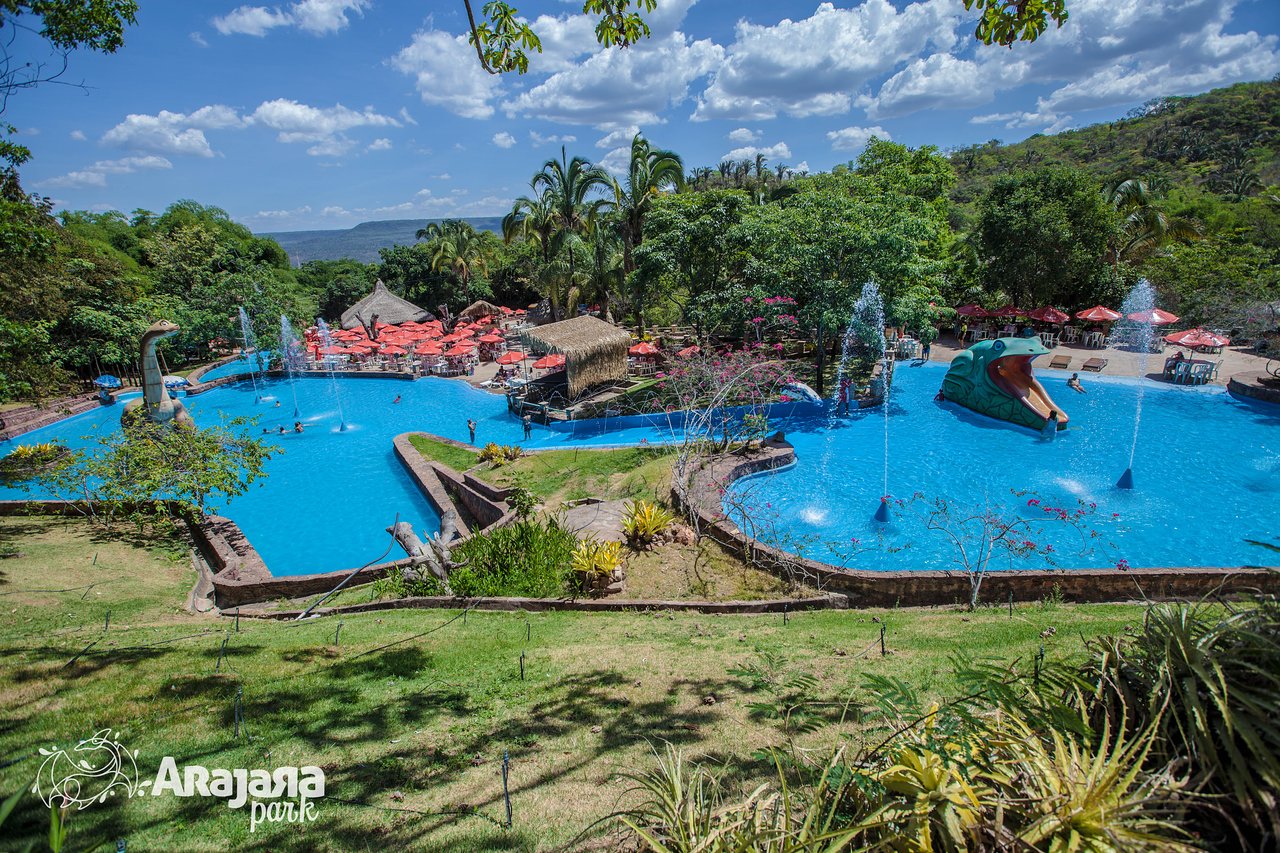
Arajara Park no Cariri04:26

O que fazer em Juazeiro, Barbalha, Crato e Santana32:47
With a huge tourist potential, the region offers various attractions that contribute significantly to the local economy.
1. Ecological Tourism
Situated on the slopes of Chapada do Araripe, the town has a large area of native forest, full of mineral springs and ecological trails. In addition to the Environmental Protection Area, there are private ecological reserves that guarantee the preservation of the local flora and fauna, including endangered species.
2. Riacho do Meio Ecological Park
This park is home to the Araripe Geopark, where visitors can find mineral springs and marked trails. Although no prior permission is required to visit, it is recommended to be accompanied by a guide, as the trails are well signposted.
3. Caldas Spa
Located in the district of Caldas, at an altitude of over 700 metres, this spa is a great place for leisure, with swimming pools, waterfalls, restaurants and sports facilities. The spa has two natural hot springs, as well as holiday chalets and the Hotel das Fontes.
4. Arajara Park
Located in the Arajara district, at an altitude of 920 metres above sea level, the park offers swimming pools, water slides and various leisure activities, as well as a restaurant and bars.
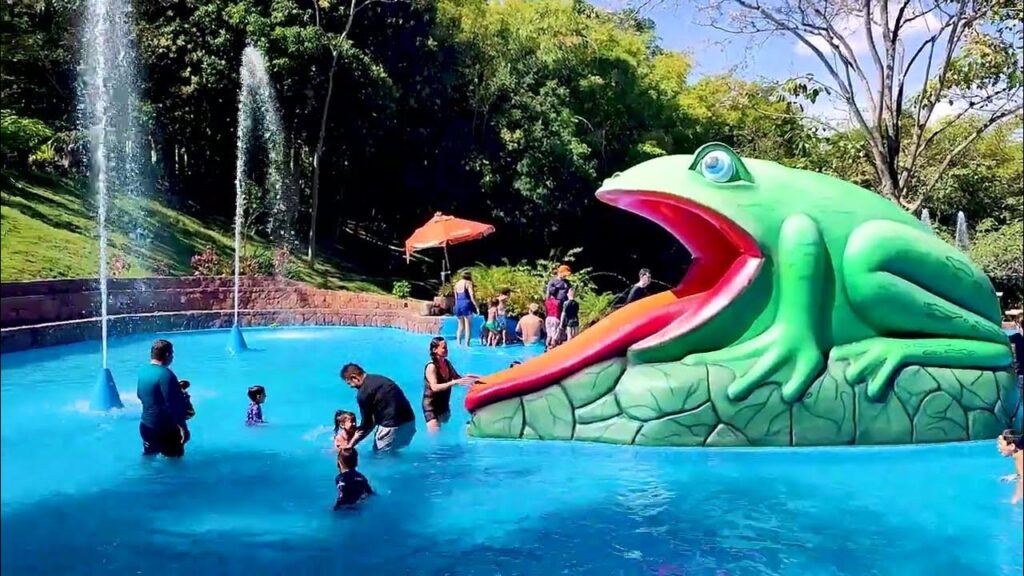
The park also has a private reserve with an ecological trail where you can see the Soldadinho do Araripe, a typical bird of the region.
5. Historical Tourism
Barbalha is known for its rich architectural heritage, with a historic centre that preserves several public and private buildings from the 18th and 19th centuries. This area, which extends over some 20 streets, is an invitation to explore local history.
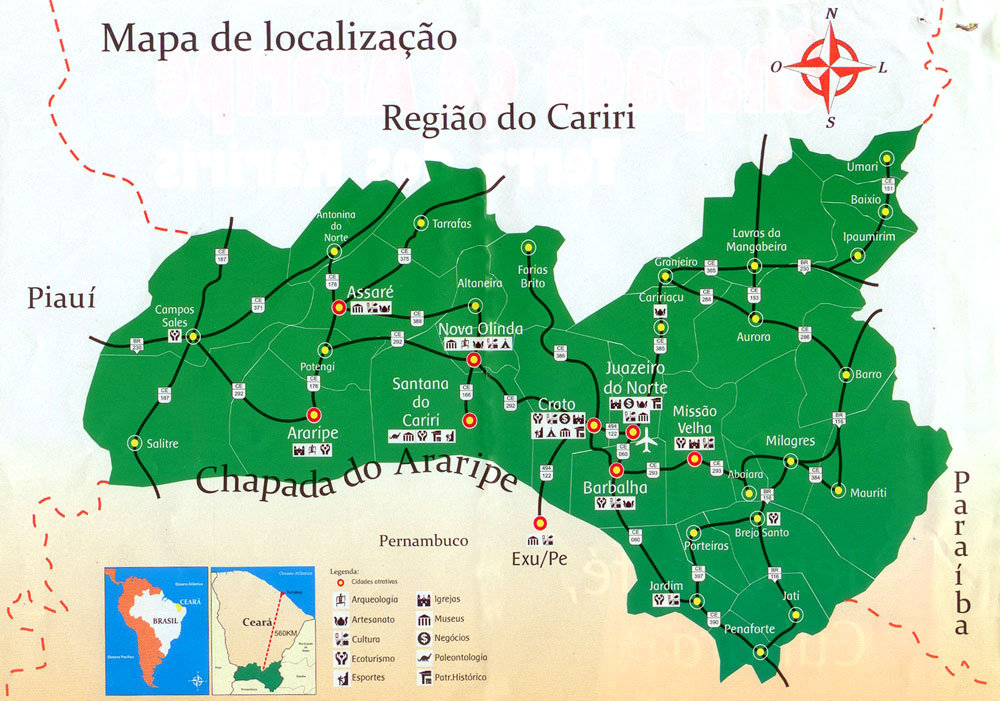
6. Rural tourism
The rural area of Cariri is made up of several communities that live mainly from agriculture, especially the cultivation of sugar cane and the production of rapadura.
Visits to sugar mills and the opportunity to taste the region’s typical dessert attract many visitors, especially pilgrims who come from Juazeiro do Norte during religious pilgrimages.
7. Religious tourism
The religiosity of the people of Cariri is marked by a mysticism of enchantment and belief, culminating in events such as the festival of Santo Antônio or the Festa do Pau da Bandeira, where thousands of believers take to the streets in honour of the patron saint, carrying a large wooden trunk.
8. Culture and Folklore
Recognised as one of the greatest repositories of popular culture in the Brazilian interior, the region attracts tourists during the festivities in honour of the patron saint, Santo Antônio. Various folklore groups and folguedos juninos, made up of local people, keep the cultural traditions alive, involving young apprentices under the guidance of masters.
9. Feast of Saint Anthony
The city’s biggest popular festival takes place in June in honour of Saint Anthony.
The festival lasts around 15 days and is one of the largest June festivals in Brazil, with a programme that includes the traditional religious trezena, kermesses and concerts in the city park. The festival begins with Pau da Bandeira Day, a local tradition that is more than 100 years old.
10. Pedra Cariri Geosite
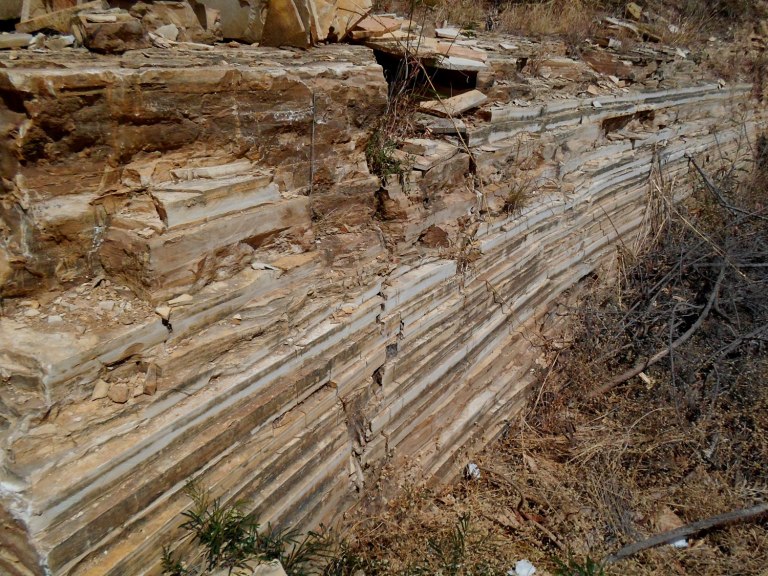
Geossítio Pedra Cariri
The abundance of fossils in the Chapada do Araripe is such that small specimens can be seen on the walls and floors of houses in the region, due to the use of laminated limestone known as Pedra Cariri.
Many houses are built with these stones, which boost the economy of Cariri Oeste, especially in the towns of Santana do Cariri and Nova Olinda.
Main fossils found on the Araripe Plateau
The Chapada do Araripe is one of the most important palaeontological regions in Brazil, with unique fossils of great scientific importance.
Among the most important fossils found are
- Fish fossils: The region is rich in fossil fish species, such as Osteoglossum, the ancestor of modern fish, and several other species dating back to the Cretaceous period.
- Reptile Fossils: Remains of dinosaurs and other prehistoric reptiles have been found, including the remarkable Santanaraptor, a theropod dinosaur from the region.
- Amphibian fossils: Specimens of amphibians, such as frogs and toads, have been discovered, helping us to understand the evolution of these animals.
- Insect fossils: The preservation of insects in amber is a striking feature of the Chapada do Araripe, allowing the study of ancient species and their ecological interactions.
- Plant Fossils: Various fossilised plants, such as ferns and conifers, have been found, revealing information about the flora of the time.
- Mollusc fossils: Mollusc remains, such as bivalves and snails, are common in the region and contribute to our understanding of past aquatic environments.
- Pterosaur fossils: The Chapada do Araripe is one of the few regions where pterosaur fossils, such as Tupuxuara, have been found, providing insights into the diversity of flying reptiles.
These fossils are fundamental to palaeontological research, allowing scientists to understand the evolution of life on Earth, climate change over geological time and the interactions between different species.

The Museum of Palaeontology of the Regional University of Cariri, located in the region, houses an extensive collection of these fossils and acts as a centre for research and education on the rich palaeontological history of the Chapada do Araripe.
For further information
- Gastronomy: Cariri’s cuisine is rich and varied, with typical dishes such as baião-de-dois, carne de sol with macaxeira, mugunzá and rapadura. The local markets offer a wide variety of handicrafts and typical food.
- Accessibility: Cariri’s tourist infrastructure is developing, with accommodation ranging from simple inns to more elaborate hotels. Access to the main attractions is facilitated by well-maintained roads, and local guides can be hired to enhance the experience.
- Annual Events: In addition to the Santo Antônio Festival, the region hosts other cultural and religious events throughout the year, such as the Nossa Senhora das Dores Festival in Juazeiro do Norte, which also attracts a large number of visitors.
- : The Chapada do Araripe is a centre for scientific research, especially biodiversity and palaeontology. The Museum of Palaeontology at the Regional University of Cariri houses an important collection of fossils and promotes education and awareness of the importance of preserving the environment.
Major Cities in Cariri
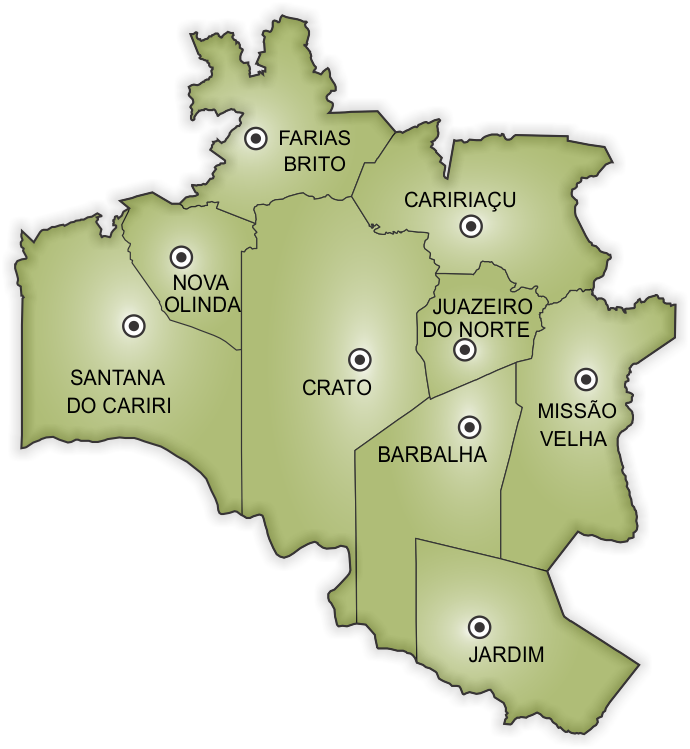
- Barbalha: This city stands out for its cultural and historical richness, especially during the Pau da Bandeira festival. You can visit Arajara Park, a water park, and Balneário Caldas, with natural mineral springs and pools.
- Missão Velha: Known for its natural heritage and fossils, it is part of the only Geopark in Latin America.
- Nova Olinda: Offers good options for archaeology, folklore and nature, including the Ponte de Pedra Geosite, where you can see rock inscriptions.
- Santana do Cariri: Recognised for its fossil heritage, it houses the Palaeontology Museum of the Regional University of Cariri and is known as the palaeontology capital of Ceará.
- Juazeiro do Norte: An important religious pilgrimage centre, especially in honour of Padre Cícero. It has a rich gastronomy and shopping opportunities for local handicrafts.
- Crato: Known for its museums and natural beauty, as well as the Araripe Geopark and ecological trails. It stands out for the Lameiro waterfall, which offers a magnificent view.
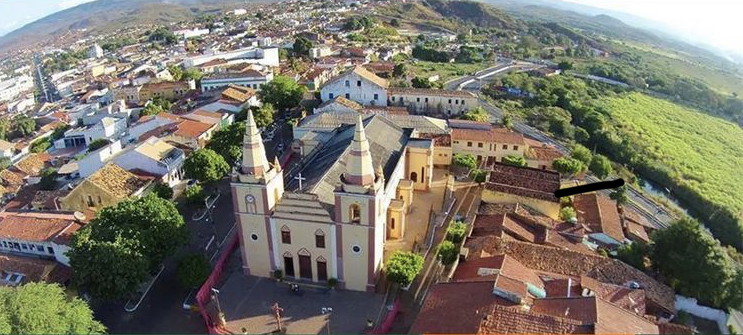
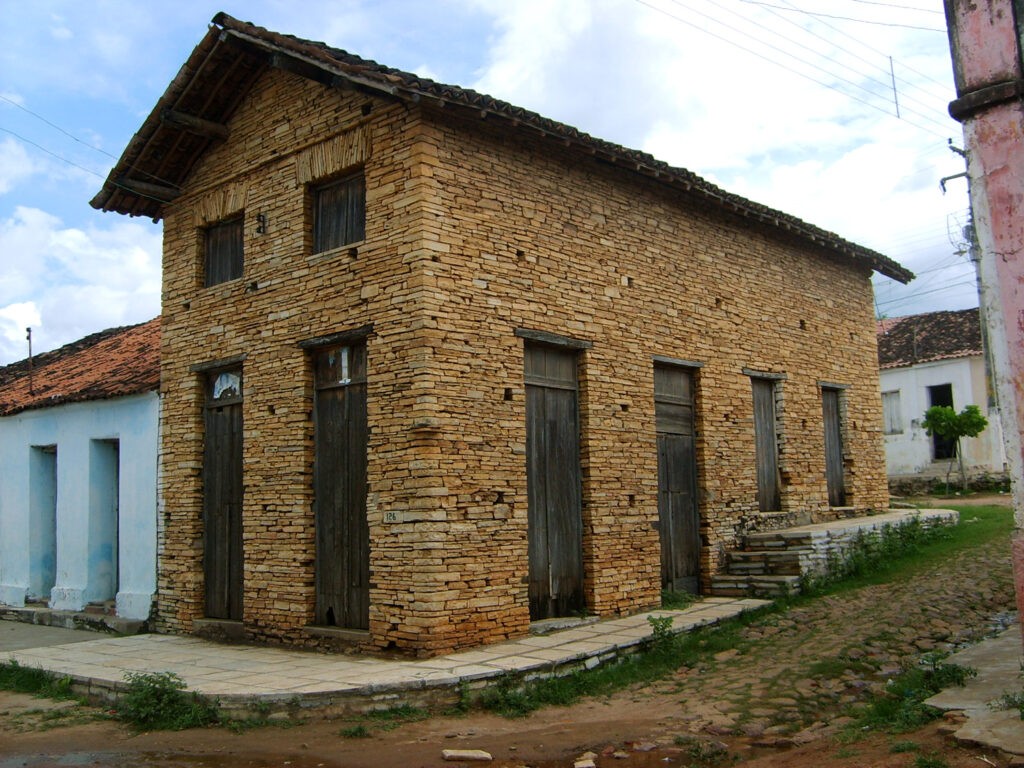

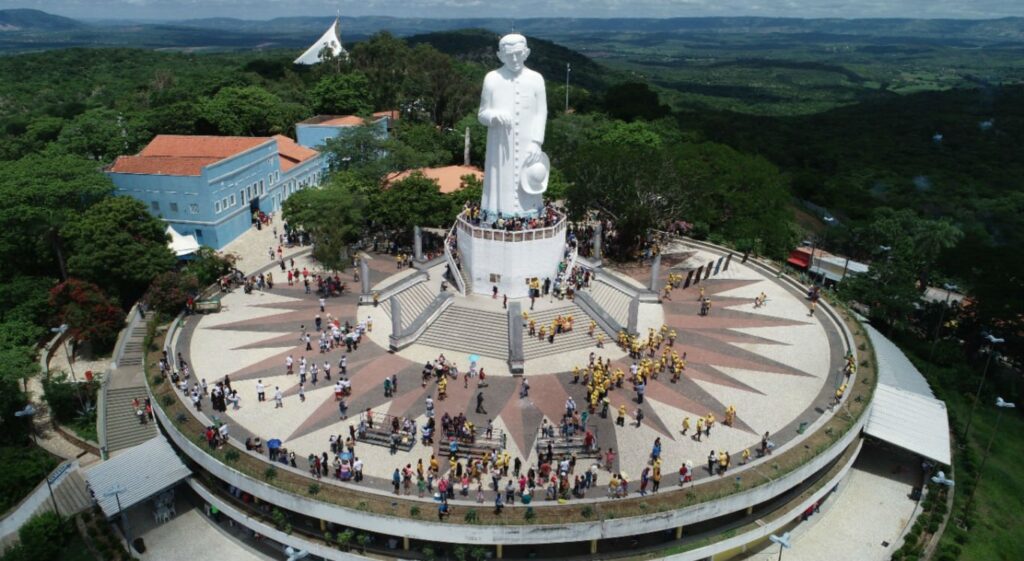
The Cariri region is a true cultural and natural treasure, attracting visitors from all over the world with its unique beauty and traditions.
Publicações Relacionadas
Baturité Massif: A Scenic Destination in Ceará
Religious Tourism in Juazeiro do Norte and in Northeast Brazil
Three-day tour of the Cariri region of Ceará
Guaramiranga: The Switzerland of Ceará
Ubajara National Park: Adventure Awaits in Ceará
Serra de Ibiapaba: A natural paradise for adventure and ecotourism
This post is also on:
![]() Português
Português ![]() English
English ![]() Deutsch
Deutsch ![]() Español
Español ![]() Français
Français



















